|
The Weaving Goddess Meditation
In the Celtic tradition creation has no beginning or end it is constantly weaving its web for eternity. The Weaving Goddess appears in sorrowful and terrible forms as we see her in nature, however this shadow side is always in balance and as the invocation below states she weaves life upward through the green grass as well as death downward through the mold. When we meditate with the land and especially with its energies, we may find a deep pain and sorrow which William Butler Yeats says is the mood of all ancient peoples for we are incomplete and out of harmony in our human lives. In the Celtic tradition we seek that completion through connecting with all of life and its web. The sense of non-duality and acceptance of life creates a sublime feeling in the depths of our soul. However, it also carries a responsibility for this type of meditation isn’t about creating a personal nirvana but more about a profound awakening to being in harmony with all of life. To understand these deep concepts, we meditate on the Weaving Goddess. The invocation below calls to the Weaving Goddess and accepts her role in the tradition: Chorus: I dreamed of Ochil the dim goddess, who through all, through all, Orchil weaves the weft, Orchil weaves the weft of eternal beauty. I dreamed of Orchil the dim Goddess who is under the brown earth in a vast cavern where she weaves at two looms, with one hand she weaves life upward through the green grass and with the other she weaves death downward through the mold. She has her feet far down among the roots and trees, and stars thickening in her hair as they gather in the vastness and blackness of the sky on a night of frost. Her form fills all the world where wisdom dwells. But she is sorrowful and terrible for the hearts of men know her no more in her ancient loveliness. She is the washer at the ford, a tall gaunt woman, chanting the death dirge as she washes the shroud of he that sees her. She may grow great and terrible and inhabit darkness. She loveth loneliness, solitude is her breath. She is Queen of all things on the earth and in the sea and in the white palaces of the stars built on the dark walls of time above the abyss. Once you have read the invocation imagine yourself at Connla's Well as described in the previous meditation on the hazel- CLICK HERE FOR DETAILS Meditate on the rippling shapes of the water and the moon rising and shining upon its moving surface, which will take you deep within or just know it is happening. Then move away from the Well or pool of water and enter a stone circle. Before you is a stone bed and upon it a sleeping women of power. Meditate on the feel of the circle and the women as she rises and fills the space with her presence, connect with her and the energies of the earth with the help of the following chant: Chorus: Twilight envelop me, Twilight embolden me, Twilight awaken the Sidhe. Forth from his breast the old man drew A lute that once on a rowan-tree grew: And, speaking no words, began to play Over the hills and far away. An' the moon came up, and the stars grew white, An' the hills grew black in the bloom o' the night, An' I watched till the death-star sank in the moon And the moonmaid fled with her flittermice shoon, Then the Shadow that lay on the moorside there Rose up and shook its wildmoss hair, Over the hills and far away -- That is the tune I heard one day. O that I too might hear the cruel Honey-sweet folk of the Hills of Ruel. Fiona MacLeod When you feel ready, ask to hear her voice which may come in vision, thought or feeling and ask her how you can connect with the song of the Earth. -Meditate - This written meditation cannot replace the experience of the live meditation and community support of our Woodland Bard Evenings. If you wish join us on Sunday 11th October at 6pm please click on the link below. May you feel the support of nature in your life as you take part in its Wellbeing.
1 Comment
Left to Right- Hazel the tree of Wisdom - Moonlit sky - Rowan tree of Meditation
Woodland Bard Meditation. Our meditation starts with honouring the land. The land is the mother, the provider of everything we need and it is she who is honoured first in Celtic lore. The land is often personified as a Goddess and was seen in the landscape as the undulating hills or the life-giving waters. The three names below represent the three Queens of Ireland, the sovereignty of its land. However, these ancient Gaelic names can connect us to which ever land we live upon at this time, for they call to the deities of all Celtic lands which once stretched all across Europe and beyond. The main verses are adapted from the beautiful words of Eleanor Merry, an English poet with a deep connection with the Celtic twilight. Chorus: Eriu, Banba, Fodhla, I seek the land of Erin, Fruitful be her seas, perpetually green her forest, I feel her in my bones, I feel her in my blood. Danu, soul of the ancient mysteries, Wanders forever under the canopy of heaven, Wrapped in her mantle of bluest aether, And the vision of her calls every human heart. Her shadow is the forgotten mysteries And lives in the sadness of Celtic Twilight tales, When hearts wake again to the longing for forbidden lands, Or for the shining hosts of the Sidhe, Or for the caves of the hoary sleepers. The Celtic folk soul is the soul of a spiritual awakening, The touch of a Woman of Beauty who will Come into the hearts of men and women Like a flame upon dry grass, Like a flame of wind in a great wood. After this blessing we make an offering of hazelnuts to the Sidhe, the ancestors of this land saying the words: How beautiful they are, the lordly ones who dwell in the hills, in the hollow hills. They have faces like flowers and their breath is a wind that blows amid grasses filled with white clover. Their limbs are more white than shafts of moonshine, They are more fleet than the March wind, they laugh and are glad and are terrible when their lances shake and glitter every green reed quivers. How beautiful they are, how beautiful, the lordly ones in the hollow hills. Fiona Macleod Wisdom of Hazel Meditation Now it is time to enter the Celtic Twilight in meditation with all of Nature. The following prose is designed to take you into meditation. Where the water whispers mid the shadowy rowan trees I have heard the Hidden People like the hum of swarming bees: And when the moon has risen and the brown burn glisters grey I have seen the Green Host marching in laughing disarray. Connla’s well lies at the foot of a mountain ash, those who gaze within may if they can find a guide be lead to the fountain of perpetual youth. The ash berries fall into the waters and turn then to fire. Connla the druid is the guardian of the well. Among the nuts in the hazel tree, I sing to the salmon in the faerie pool, What is the dream the salmon dreams in the well of Connla beneath the hazel? Fiona MacLeod Visualise a pool of water and notice the patterns of light upon its rippling surface, allowing the vision to take you within or if you cannot visualise just know it is happening. Enter the stone circle, experience the moon rising and slowly a soul awakening that is connected to all of the web of life. Before you is a doorway or just know it is there. Enter the doorway and descend into your soul landscape. As you descend get a sense of the hazel tree (pictured above) and what it has to tell you. Take whatever images, thoughts and feelings that come to you. Slowly in stillness approach the hazel tree whether you can see it or have a feeling of its presence, sit with it in stillness and peace. -Meditate - In your own time be aware once more of the hazel and the exchange you have had with it. Notice an offering it may be a nut, leaf, stone or twig. Treasure it and allow it to be absorbed into your heart and as it melts into your being ask- What can I do to help the web of life? - PAUSE Accept whatever answer comes to you whether it be a thought, feeling or vision and slowly in stillness make your way back to the doorway and arrive back in your outer surroundings with a feeling of incredible support and purpose. This written meditation cannot replace the experience of the live meditation and community support of our Woodland Bard Evenings. If you wish join us on Wednesday 30th September at 8.15pm please click on the link below. May you feel the support of nature in your life as you take part in its Wellbeing. Where tree met ditch, where ditch met field, where field met an old boundary, the oldest living being in Dorset appeared before me. heart of Wessex- Duncliffe WoodsEntering an ancient woodland is always an exhilarating experience as a quality of extraordinary age presents itself to the senses. An ancient memory triggered and a place of interest around each bend in the path. I cannot help but wonder at why we create so much human entertainment or build such extravagant monuments when here in Nature all need is met. 'The grand show is eternal. It is always sunrise somewhere, the dew is never all dried at once, a shower is forever falling; vapour ever rising, Eternal sunrise, eternal sunset, eternal dawn and gloaming, on seas and continents and islands, each in its turn, as the round earth rolls.' John Muir. My journey to Wessex this year took me to the ancient woodlands of Duncliffe which is near to the picturesque town of Shaftesbury. The landscape of this area is of gently rolling hills and for me epitomises the character of the English countryside. As I enter Duncliffe woods I noticed a ground layer dominated by yellow pimpernell and stately fronds of ferns, a welcome change from the invasive bramble and nettle of a typical fertile soil in a secondary woodland. The high trees are of oak, ash and grey willows with sections of coppiced hazel. Down in the valley a roe deer watched me and in damp places hornets, wasps and flies buzzed effortlessly. As I climbed the top ridge something in the landscape changed. Charms of song birds darted before me and I froze as a cacophony of sweet melodies announced a special place. A riot of plant species, a body of water and a high vantage point combined into a biodiverse frenzy of pure joy. St John’s wort, bird’s foot trefoil, kidney vetch, strawberries and gorse created a mecca for wildlife as tits, robins, blackbirds and nuthatches kept busy at this exquisite feeding station. I continued into the denser wood with expectation at what I would see next and then where tree met ditch, where ditch met field, where field met an old boundary the oldest living being in Dorset appeared before me. Much to my delight the boundary of the wood was marked by a grove of small-leaved limes, a sight only ever seen in old woods and not one I see often. Bluish green heart-shaped leaves upon branches attached to towering trunks of slightly ridged bark. A mere memory of the limes that once dominated lowland England yet still enough to make my heart flutter and fill me with excitement. I could almost smell the scents and hear the sounds of woodsman coppicing and working amongst these age-less trees. After sitting awhile, I continued into the dense copse and as I did so the black shape of a mature raven flew above me uttering a deep croak. This ancient sound of the skies, towering limes, moss glad oaks and stately ash transported me to a timeless landscape:- In the heart of Wessex. If you have enjoyed this article you may wish to subscribe to our free newsletter packed with articles and updates on trees, plants and nature connection. Twilight is betwixt night and day and in Celtic times was the new day beginning to unfold as the days started at night. In our Woodland Bard sessions we enter the Celtic twilight through invocations, drumming and a deep connection to nature.
We started with an invocation to the land by chanting to the Primal Goddess (please see Lughnasadh article), Eriu, Banba, Fodhla and then went on to invoke the Dagdha and the Sidhe using the words below: Chorus: Take me to the Old Ones, Take me to the Hidden Ones, Take me to the Sidhe, Guardians of the Land. Good God Dagdha, Father of Many, Parentage of the Sidhe, All-knowing Noble, Spirit of the Green Wood shelter us; Power of the soft brown earth comfort us. May the strength rising from the roots of the trees transport us to the bright realms acting as pillars of hope. May the roots of trees ground us in one reality, taking us into the depths of our being, the womb of the earth. Inspiring us to be caretakers of all Nature. Chorus: Take me to the Old Ones, Take me to the Hidden Ones, Take me to the Sidhe, Guardians of the Land. Good God Daghdha, May we be as steady as a tree, serving all beings and taken only that which we need to sustain our lives. Good God Daghdha, Envelop us in the knowledge of the Green Wood. Teach us to have a compassionate heart and truly love all souls equally as one. Great God Daghdha teach us to be light of spirit, tender of heart, steadfast in being. May the wild wood of all souls continue to blossom for all eternity. Jonathon Huet 2017 We then entered the Celtic Twilight in meditation connecting with the Rowan tree and the beauty of the Dandelion plant. Both in meditation and on the physical we made an offering of hazelnuts and milk to the Sidhe, the guardians of the land and its deep ancestors. After the meditation we said a prayer to the land using these words: Give thou thine heart to the wild magic, To the Lord and the Lady of Nature, Beyond any consideration of this world. Do not covet large or small, Do not despise weakling or poor, Semblance of evil allow not near thee, Never give nor earn thou shame. The Ancient Harmonies are given thee, Understand them early and prove, Be one with the power of the elements, Put behind thee dishonour and lies. Be loyal to the Lord of the Wild Wood, Be true to the Lady of the Stars, Be true to thine own self besides, True to the magic of Nature above all else. words from the Carmina Gadelica, Alexander Carmicheal. Notes on the Celtic Twilight In the nineteenth and twentieth centuries a 'Celtic Twilight' emerged; learned people felt inspired to research and revive our Celtic traditions. By this time the traditions of this land had suffered immensely, but thankfully in the Celtic lands of Scotland, Wales and Ireland these traditions had not been completely obliterated and old texts have survived that have insights into our traditional oral past. Great writers and poets such as William Butler Yeats and Lady Gregory helped bring about a revival of Irish literature and poetry and the Scots Alexander Carmicheal and Professor Magnus Maclean helped renew interest in Gaelic literature and Celtic studies. Lady Charlotte Guest put the ancient stories of Wales ( the Mabinogion) into a modern print format for the first time in 1841 and Kuno Meyers a German Scholar brought much ancient Irish poetry back into the light. The words below also used in the Woodland Bard Evening were written by Fiona Macleod who was also of this time, her writings are a huge source of inspiration: How beautiful they are, the lordly ones who dwell in the hills, in the hollow hills. They have faces like flowers and their breath is a wind that blows amid grasses filled with white clover. Their limbs are more white than shafts of moonshine, They are more fleet than the March wind, they laugh and are glad and are terrible When their lances shake and glitter every green reed quivers. How beautiful they are, How beautiful, The lordly ones in the hollow hills. Fiona Macleod For me the Celtic twilight is as real as ever and is not a neo-pagan tradition but a living tradition brought alive by practitioners working directly with these traditions that are still alive in all of nature. More modern writers continue this work such as Caitlin and John Matthews who offer that same living tradition through their incredible works. I hope you can join us for our next evening on the 16th September wherever you live and continue to explore the Celtic Twilight and connect deeply with the land. You may wish to subscribe to our free newsletter packed with articles and updates on trees, plants and nature connection. Wishing you many Blessings. The Rowan tree produces bright red berries at Lughnasdha and the first crops are harvested.
This year at this time many of us are tentatively re-emerging from a lock-down with still a lot of uncertainty before us. This article explores the festival of Lughnasadha and the importance of our connection to the land. By connecting deeply with the land where you live you will find an incredible support system. We find that all life supports our existence just as our own life supports the system too. This concept is captured in the words of John Muir: 'No Sierra landscape that I have seen holds anything truly dead or dull, or any trace of what is called in manufactories is called rubbish or waste; everything is perfectly clean and pure and full of divine lessons. When we try to pick out anything by itself, we find it hitched to everything else in the universe. ' John Muir Lughnasadha is often thought of as a festival dedicated to Lugh Lamfada (a key Celtic deity) but its true function is to celebrate his foster Mother Tailtiu who died after spending a year clearing a great plain to feed the people. It is therefore a celebration of agriculture and at this time the first harvest. A time to honour the sacrifice of the goddess of the land to feed her people. The foster-mother in Celtic society was held in great esteem and importance. Bridgit was known as the foster-mother of Jesus in her form as a Christian Saint. As we enter the season of Lughnasadha it is an opportunity to explore a key aspect of essential human need- the food we eat. At one time the food we eat would have come from the countryside around us, grown by the community ripened by the sun, picked by the hands that would eat it and grown in well-nurtured organic soil. Nature dictated what crops were suitable for the conditions of a given area, alleviating the need for this constant questioning of what is good for us. We now pay for scientists to explore the chemical components of food to help us with our quest for good health and the obvious conclusion that a mixture of food in moderation covers most of our needs; that every food has benefits and disadvantages. However ancient lore points to the best food types are those grown in season. What we eat, how it is grown and our expectation of foods being available all year round was explored in one of the oldest Irish stories! In the Second Battle of Moytura, the terms spoken between Lugh and Bres were very much about the best way to work the land. It clearly states that each season works for the production of food and to expect it out of season is to go against nature. To set up schemes which look to improve the overall quality of food production seem to me far more effective than creating niche organic markets. Raising the standards of all foods and ensuring all crops are grown considering the welfare of wildlife and the welfare of all domestic animals is surely true progress, and much more needed than ploughing money into food research and intensive farming so that food can be grown all year round! Lughnasadha Ritual Here is an invocation to the land you may wish to use and although it is especially relevant to Ireland, these ancient Gaelic names can connect us to which ever land we live upon at this time, for they call to the deities of all Celtic lands which once stretched all across Europe and beyond. The main verses are adapted from the beautiful words of Eleanor Merry, an English poet with a deep connection with the Celtic twilight. Chorus: Eriu, Banba, Fodhla, I seek the land of Erin, Fruitful be her seas, perpetually green her forest, I feel her in my bones, I feel her in my blood. Danu, soul of the ancient mysteries, Wanders forever under the canopy of heaven, Wrapped in her mantle of bluest aether, And the vision of her calls every human heart. Chorus Her shadow is the forgotten mysteries And lives in the sadness of Celtic Twilight tales, When hearts wake again to the longing for forbidden lands, Or for the shining hosts of the Sidhe, Or for the caves of the hoary sleepers. Chorus The Celtic folk soul is the soul of a spiritual awakening, The touch of a Woman of Beauty who will Come into the hearts of men and women Like a flame upon dry grass, Like a flame of wind in a great wood. Light a candle to honour the Mother earth who gives to us all without any reward; reflect on your actions this year. Have you helped be a caretaker of the sacred land or have you taken without care? What can you give back to earth, how can you lessen your impact? Meditate on the beauty of nature and the role you play in her cycle. Breathe, be still and feel connected to the wonder of Nature. As you receive and give to the land feel the immense support of all the beings you share the earth with and when you are strong enough always remember to give back what you have received from the land and all its beings. Wishing you all a fruitful Lughnasdha. If you have enjoyed this article you may wish to subscribe to our free newsletter packed with articles and updates on trees, plants and nature connection. INDIGENOUS ROOTS AND WILDLIFE CORRIDORS. Left to Right - Hampshire - Yorkshire - Northamptonshire As I walk through a wheat field on Walderton Common which runs along the boundaries of Hampshire and West Sussex, I stop to gaze at a tractor ploughing the soil mobbed by the birds following it and I reflect on the timelessness of farming practice. Indeed, the tractor was once a horse which dragged the plough along, but the sight and scents continue in a similar manner and the rural countryside of England is where my indigenous rural roots are to be found. I need not travel to jungles or plains in distant places but to rolling downs, ancient woods and babbling brooks to discover the magic of my ancestral roots. Is my ancestors plight any different from the indigenous tribes from all around the world? Were they not wrenched from their homes and families to work in terrible conditions in polluted industrial areas to become the slaves of so-called progress? The earliest evidence of land clearance is in areas known as the planned countryside. For instance, the Yorkshire Wolds, an area of chalk downland was cleared as early as 7000BC by Mesolithic man. They created heaths and pasture for wild beasts that they consumed for food. These areas were maintained by the continued burning of the heaths to stop the trees returning. Later in the Neolithic period (5000BC) woodland was cleared permanently for agricultural use in areas such as East Anglia, Somerset and the Lake district. These areas had shallow more easily cultivated soils and were originally open-prairie farming field systems changed into small hedged fields by the enclosure acts of the late eighteenth and early nineteenth centuries. The areas that were farmed early on in history stretch from York through the centre of England to the Dorset coast. They contain straight roads, regular fields and only a few isolated ancient features missed by the enclosure commissioners. John Claire, a famous poet from Northamptonshire in the East Midlands was deeply affected by the enclosure acts which he felt destroyed much of his beloved countryside where he lived. He wrote wonderful poetry which expressed a deep love of the English countryside. Old stone pits with veined ivy overhung Wild crooked brooks o’er which was rudely flung A rail and plank that bends beneath the tread Old narrow lanes where trees meet overhead Path stiles on which a steeple we espy Peeping and stretching in the distant sky And heaths o’erspread with furze blooms’ sunny shine Where wonder pauses to exclaim ‘divine’ Old ponds dim-shadowed with a broken tree – These are the picturesque of taste to me While paintings winds to make compleat the scene In rich confusion mingles every green Waving the sketching pencil in their hands Shading the living scenes to fairey lands John Clare Left to Right - Musk Mallow - Vervain - ST John's Wort - Red Bartsia
Continuing my journey on Walderton down I arrive at a threshold where the wheat field ends and the woodland starts. Here the magic happens as a sudden riot of colour disturbs the green grass and plumes of butterflies rise from the grass. The wheat is too barren, the wood too dark but the wildlife corridor between the two is a perfect mecca of biodiversity and a beautiful sight to behold. Fritillaries, holly blues, bright yellow brimstones, red admirals and peacock butterflies feed amongst wild marjoram and hawkbits. A closer look reveals the yellow stars of St John’s wort and delicate pink colouring of musk mallow blooms cluster together on a singular stalk. The tiny pink flowers of vervain are held on stiff stalks and I wonder how such a subtle plant captured the attention of the Celtic and Roman people for them to discover its use to assuage pain, treat nerves and calm stress. Speedwell and milkwort caress the grass with sky blue flowers just millimeters across as hemp agrimony and willowherbs stretch above them. Yellow and white bedstraws clamber for space whilst red bartsia and self heal decorate the edges. A single rest harrow flower hides behind the fleabane. As I enter the woods sweet woodruff foliage appears as enchanters nightshade and herb bennet grow around it. Lord and ladies' berries stand as a warning whilst herb Robert and hedge wound wort make use of a gap in the canopy. So much to discover, so much to see, my indigenous roots are nestled in the wildlife corridors of a rural England, for this is the place where chance decided I must be: ‘All the wild world is beautiful, and it matters but little where we go, to highlands or lowlands, woods or plains, on the sea or land or down among the crystals of waves or high in a balloon in the sky; through all the climates, hot or cold, storms and calms, everywhere and always we are in God's eternal beauty and love. So universally true is this, the spot where we chance to be always seems the best.’ John Muir If you have enjoyed this article you may wish to subscribe to our free newsletter packed with articles and updates on trees, plants and nature connection. Left to right - Field Scabious- Lady's bedstraw- Pyramidal orchid The joy of plants as I walked off the path into the chalk meadow at Stanmer Nature Reserve. When I arrived I was greeted by a storm of dust as builders dug and drilled at the entrance and beyond. In haste I nearly ran into the woods but instead stopped and walked into what appeared a field of grass. Then the magic happened as between the grass I saw fully developed scabious plants like the gentry of the plant kingdom with large blueish-lilac flowers known as blue bonnets or bachelor's buttons. I literally jumped for joy at the sight of vibrant pyramidal orchids amongst a matt of yellow bedstraw. Marbled white butterflies flitted from flower to flower to complete the delightful scene. I couldn't help ponder once more on John Muir's words as I walked just a little way from dusty, noisy human endeavour to the bliss of landscape : All the wild world is beautiful, and it matters but little where we go, to highlands or lowlands, woods or plains, on the sea or land or down among the crystals of waves or high in a balloon in the sky; through all the climates, hot or cold, storms and calms, everywhere and always we are in God's eternal beauty and love. So universally true is this, the spot where we chance to be always seems the best. Left to Right - Wild Carrot - Ribbed melilot- Restharrow- Agrimony
Stately wild carrot stood proud with slender agrimony and the bold displays of knapweed. The native peas included ribbed melilot, restharrow and some tufted vetch and the compact carpet of fragrant wild thyme weaved beneath them. My guide switched from marble white to a red admiral butterfly as I entered the woods and although not ancient still exuded that sweet stillness erupting from the throbbing, pulsing activity of sap rising in trees characteristic of summer months. The corky bark of elm and the smooth bark of hornbeam reminded me I was in Sussex rather than Hampshire woods. On the wooded edge meadow cranesbill adequately competed with the grass sward and wood avens and herb robert grew in the shadier areas. Out of the woods the flora changed to grey willows and vipers bugloss with a drift of ox-eye daisy followed by musk mallow, fleabane and bristly ox-tongue in more fertile grass-lands. As I run out of words to describe this nature reserve on the edge of a city I will leave you with one of my favourite plant poems which I have quoted in part before but here it is in its entirety: O the prickly sow thistle that grew in the hollow of the Near Field I used it as a high jump coming home in the evening - A hurdle race over the puce blossoms of the sow thistles. Am I late? Am I tired? Is my heart sealed from the ravening passion that will eat it out Till there is not one pure moment left? O the greater fleabane that grew at the back of the potato pit: I often trampled through it looking for rabbit burrows! The burnet saxifrage was there in profusion And the autumn gentian - I knew them all by name before I knew their names. We were in love before we were introduced. Let me not moralise or have remorse, for these names Purify a corner of my mind; I jump over them and rub them with my hands, And a free moment appears brand new and spacious Where I may live beyond the reach of desire. Patrick Kavanagh May Nature continue to inspire you wherever you happen to be! If you have enjoyed this article you may wish to subscribe to our free newsletter packed with articles and updates on trees, plants and nature connection. Summer Solstice 20th June- 31st July 2020
On the evening of 20th June 2020 the Sun will have reached its peak which marks a key threshold in the seasons of our life, it is the time when the great Oak of the Dagdha gives way to the tenacious strength of the Holly which takes us through to the waning year. This year it coincides with a New Moon and the annular solar eclipse making it the perfect time to re-emerge after a lock down! At this time of year I am normally extremely active running outdoor courses but this year I have had an equally special time celebrating with the Strange times story telling group telling the tales of Fionn McCuaill who matured into a wise leader and poet finding that connection with all of nature where he is free from the burdens of life, a place which has been very much needed this year : No pain here, no dull empty hours, no fear of the past, no fear of the future. So compactly filled with God’s beauty, no petty personal hope or experience has room to be. Drinking this champagne water is pure pleasure, so is breathing the living air, and every movement of the limbs is pleasure, while the whole body seems to feel beauty when exposed to it, entering not by eyes alone but equally through all one’s flesh like radiant heat, making a passionate ecstatic pleasure glow not explainable. John Muir Re-emergence Morning Meditation You may wish to connect with this time of year when Nature is overflowing with the joyous abundance and vibrancy of the young adult prepared to now step into the responsibilities that life has offered to them. This meditation can be done not just this weekend but every morning throughout the Summer Season. Light a candle and recite this traditional Irish prayer to arise with the power of the elements: I arise today through the strength of heaven: Light of sun, Radiance of moon, Splendour of fire, Speed of lighting, Swiftness of wind, Depth of sea, Stability of earth, Firmness of rock. Once you have recited this then offer a prayer to the Dagdha the embodiment of the spirit of the Green wood who represents the zenith of the mature Oak tree that will shelter you in times of need: Good God Dagdha, Father of Many, Parentage of the Sidhe, All-knowing Noble, Spirit of the Green Wood shelter us; Power of the soft brown earth comfort us. May the strength rising from the roots of the trees transport us to the bright realms acting as pillars of hope. May the roots of trees ground us in one reality, taking us into the depths of our being, the womb of the earth. Inspiring us to be caretakers of all Nature. Good God Daghdha, May we be as steady as a tree, serving all beings and taken only that which we need to sustain our lives. Good God Daghdha, Envelop us in the knowledge of the Green Wood. Teach us to have a compassionate heart and truly love all souls equally as one. Great God Daghdha teach us to be light of spirit, tender of heart, steadfast in being. May the wild wood of all souls continue to blossom for all eternity. Sit in an upright comfortable posture or lay down and cover yourself in blankets. Visualise a giant oak tree or just feel it is there and sense the protection of the Dagdha. When you are ready visualise yourself moving from the protection of the giant Oak into a Birch Grove, the tree of new beginnings which represents the gentle strength required to re-emerge. The light airy birch grove is teeming with melodious birds, a myriad of fungi and the sounds of wild animals stalking prey or making shelter. Make it as real as possible, try to touch the barks, smell the scents and hear the sounds. Go deep into the feeling of being immersed in nature, remembering it is the feeling rather than the visions that is most important. Feel the support of the woodland floor and imagine bright light coming up into you from its depths filling your being with peace, love, gratitude and acceptance. Stay here for as long as you need or are able to allowing the light to fill you with increased courage and energy at this vibrant time. Only when you are ready come out of meditation and recite the words: Light of a New Day awaken in my heart, May I greet each day with new eyes, ears and speech Knowing a new adventure has began. May I feel a passion for each day as if it is the only day I have to live my life A day filled with excitement, expectation and exaltation as the sun rises and I greet a New Day. J.Huet Thank the elements and all of nature for its support, know there is a place within you where there is no pain and fear and begin an exciting new chapter in your life. When you feel ready and strong you can take that joy and support with you out into the world, contemplating or reciting these words: Untouched, unshaken in a constant state of love. A state of peace connected to an ever-evolving heart that reaches out to every soul on the planet. To see only beauty, to allow every person to shine with the radiance of their own inner true selves. To go beyond judgement and fear and connect with every being in their innermost heart. To be patient, tolerant and unyielding in a state only you can know. To meet everyone in the bliss of conscious acknowledgement and to know every fault perceived is a reflection of the state of your own inner heart. Reach out to the goodness in the heart of every person you meet and watch them shine into conscious awareness knowing they are loved. Be kind to everyone you meet. ©Original writings created by and for the use of Jonathon Huet 2020. Continue to connect with the Celtic traditions of the Land and receive our free newsletter packed with articles on trees, plants and Nature Connection kidney vetch- milkwort- birds foot trefoil. Flowers of the downsI'm just in love with all these three, The Weald and the Marsh and the Down country. Nor I don't know which I love the most, The Weald or the Marsh or the white Chalk coast! I I've buried my heart in a ferny hill, Twix' a liddle low shaw an' a great high gill. Oh hop-bine yaller an' wood-smoke blue, I reckon you'll keep her middling true! I've loosed my mind for to out and run On a Marsh that was old when Kings begun. Oh Romney Level and Brenzett reeds, I reckon you know what my mind needs! I've given my soul to the Southdown grass, And sheep-bells tinkled where you pass. Oh Firle an' Ditchling an' sails at sea, I reckon you keep my soul for me! Rudyard Kipling Ah, how I missed the Downs during lockdown and although it has been a worthwhile pursuit noting the flowers of the Cityscape I missed the Downs where I work. Old Winchester Hill is about two miles from the Sustainability Centre where I teach outdoor education. The site is a 66.2 biological Site of Special Scientific Interest as well as a Nature Conservation Review site and a National Nature Reserve. As you arrive and join the pathway you are greeted by long grass with the common sights of burdock, hogweed and willowherbs with a splash of yellow toadflax and the taller mignonette. The distinctive Jack go to bed by noon spreads its petals ready to close them at midday.The trefoils creep through the undergrowth and the yellow vetchling and the greater birds foot trefoil compete with the invasive species which indicate there is more here than the average grass sward. Left to Right- Jack go to bed by noon- Fragrant orchid - Yellow vetchling Then the magic happens, the more natural habitat of the unimproved grasslands of the Downs erupts before you with breathtaking beauty. The low clipped grass reveals a mosaic of hawkweeds, hawkbits, orchids and yellow rattles. Red kites soar above you seemly replacing the buzzards of the lower areas, skylarks rise in song as if they were presenting the climax of an aria in a famous opera and pipits dart around as if they are propelled by joy, the pulsing heartbeat of Nature seems to call out to the exploring naturalist. These Downs depend on the traditional hill-farming of England and although this area is a National Park much of the countryside is in a man-made state due to early clearances of woodlands. Ironically this biodiverse site shows human-habitation and therefore land clearance from at least the Iron age and maybe earlier as Bronze Age barrows are present within the remains of an Iron age Fort. Beatrix Potter most known for her illustrations was an avid conservationist and keen farmer demonstrating that farming and conservation can go hand in hand. Thanks to her much land has been preserved in the Lake district as she worked diligently with the National Trust which depends on pastoral farming for the survival of thousands of plant species, which in turn preserves insects, birds and mammals. Left to Right- Characteristic hangar woods- Ancient Yews- Rare Juniper trees As you approach the remains of an Iron-age Fort you receive glimpses of the original natural landscape literally clinging to the steep slopes creating hangar woodland that is so prevalent in the undulating hill landscape of this area. The trees are exquisite ancient living monuments of extreme importance consisting of the native rare junipers and yews which are thousands of years old! I shall take these visions and memories home and just like Beatrix Potter :- 'Thank God I have the seeing eye, that is to say, as I lie in bed I can walk step by step on the fells and rough land seeing every stone and flower and patch of bog and cotton pass where my old legs will never take me again.' Beatrix Potter If you have enjoyed this article and wish to receive our free newsletter packed with information on trees, plants and nature connection please subscribe below. May Nature continue to inspire you. Left to right- Dove's foot cranesbill, ivy-leaved toadflax- catsear Exploring the Cityscape'Always fond of flowers, attracted by their external beauty and purity. Now my eyes were opened to their inner beauty, all alike revealing glorious traces of the thoughts of God, and leading on and on into the infinite cosmos.... my eyes never closed on the plant glory I had seen.' John Muir This time has been great for me to connect with my home city of Brighton for usually I am working out on the Downs or in the woods away from home. Although I have been an avid botanist for over 30 years this has created a rare time for me to really observe closely what's on my doorstep and marvel even more deliberately on the common plant that grows through the cracks in the pavement. Isn't nature a marvel, here is a poem I wrote to acknowledge her tenacity and unaltered beauty: 'Delicate blooms of tenacious power, soft lush growth produced wherever it can flower. Over rubble and concrete, plastic and glass, nature regenerates, cares not if you've asked. Green fresh growth encapsulates beauty, every tiny flower tells a story. Showing no fear it grows where it can, covering up the waste produced by man. ' J.Huet 2017 I wish to emphasise most stringently that walking around Brighton from pavement to park, from shore to scrub and from busy coast to the start of the countryside has not felt a second-rate experience compared to the wilderness but an exciting pursuit to quote once more from John Muir : 'Everywhere and always we are in God's eternal beauty and love. So universally true is this, the spot where we chance to be always seems the best. ' I started my life living in centre of the City of Portsmouth in high rise flats and busy streets which meant the verges and parks were my way into nature. I always carried my note book and a pair of old heavy binoculars which I did hide most of the time because I felt I looked a little out of place. However I still remember that rush of excitement at discovering new plant and bird friends. Being a naturalist for me is finding the joy in the common place, the common wildlife and it seems I am not the only one as Patrick Kavanagh states about the plant below: 'O the prickly sow thistle that grew in the hollow of the near field I used it as a high jump coming home in the evenings. A hurdle race over the puce blossoms of the sow thistle.' One of our most common plants also pictured below is the daisy which John Muir describes thus: 'Daisies confiding wild children of light, too small to fear. To these one's heart goes home, and the voices of the storm become gentle.' Left to Right- Sow thistle - Daisy I now find myself acquainted more intimately with over 100 wild plant friends within an hour walk of the city where I live, which doesn’t include shrubs, trees or planted species.The plants vary from pavement rockets and mustards offering a ray of yellow petalled sunshine to clambering ivy- leaved toadflax and the dull pellitory of the wall in contrast to the bright red valerian growing through walls and crevices. Minute corn salad and swine cress flowers just a millimetre across, and larger but still small purple flowers of Crane and Storks bills so named from their beak-like seed pods. I still, after thirty years exclaim at the common sights of golden buttercups and dandelion and the deep purples and blues of ground ivy and speedwells sprawling or appearing to hover in the grass. I sit for a moment on a concrete slab and squinancy wort and mouse ear look out from crevices. My excitement when I see long horned poppies and bucks horn plantain growing on pebble and rubble. And then quite unannounced an area of unimproved grass boasting purple wild thyme, bright yellow catsear, autumn hawkbit (with its striking red streaks beneath its petals), and a mat of silvery fur produced by mouse ear hawkweed. The larger knapweeds, hawksbeards and ox tongue begin to flower and the promises of rest harrow and native peas. Left to right knapweed- yellow horned poppy- mouse-ear As I walk to the local shop I stop to admire the beauty of a dandelion peeping out from the pavement. The ray florets spreading out around a golden centre capturing the sun and inviting winged delights to pollinate them. Other native asters (members of the daisy family Asteraceae the largest plant family in the UK) also peeping out of cracks in the pavement include the common sow-thistle and the daisy already mentioned above whilst groundsels droop under the weight of yellow buds and little white stars shine up from the green foliage of chickweed.
Bittercresses and shepherds purse grow through the tinniest of spaces with hedge mustard and eastern rocket beside them. Germander speedwell finishes the pavement design with sky blue flowers on small patches of soil exposed to plant street trees. Luscious abundant foliage of the green alkanet, red valerian and jack by the hedge paint the pavement green and in the grass verges clovers, yarrows, nettle, and dock create a green oasis under blossoming cherries and plums. On the way back a single yellow flower of wood sorrel delighted my keen eye, common mouse ear stood proud and the red dead nettle lifted my spirits. I marvelled at so many common species decorating my urban neighbourhood from dainty and spiky to upright and sprawling to tiny and majestic to dull and shiny. As already quoted above: 'my eyes never closed on the plant glory I had seen.' John Muir If you have enjoyed this article you may wish to sign up for our free newsletter which is packed with information on trees, plants and connecting with nature. |
Details
Poetry of flowersJoin me to explore the flora of the British Isles on this blog. My intention is to attempt to capture the unique quality and beauty of each species of flower, tree or shrub. For every species featured I will be growing many more wildflowers to celebrate the joy of their existence, their intrinsic conservation value and bewildering array of uses. For nearly 30 years I have noted, studied and explored wildflowers in the field much to the patience of the walker beside me. To share this passion is a heartfelt plea to respect, preserve and care for all British Wildflowers no matter how common they seem. Archives
February 2024
Categories |


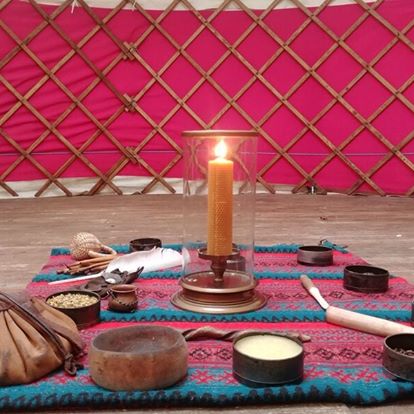
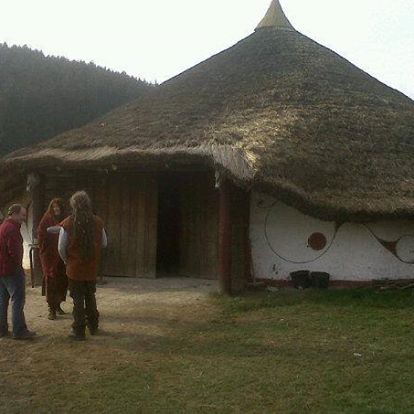
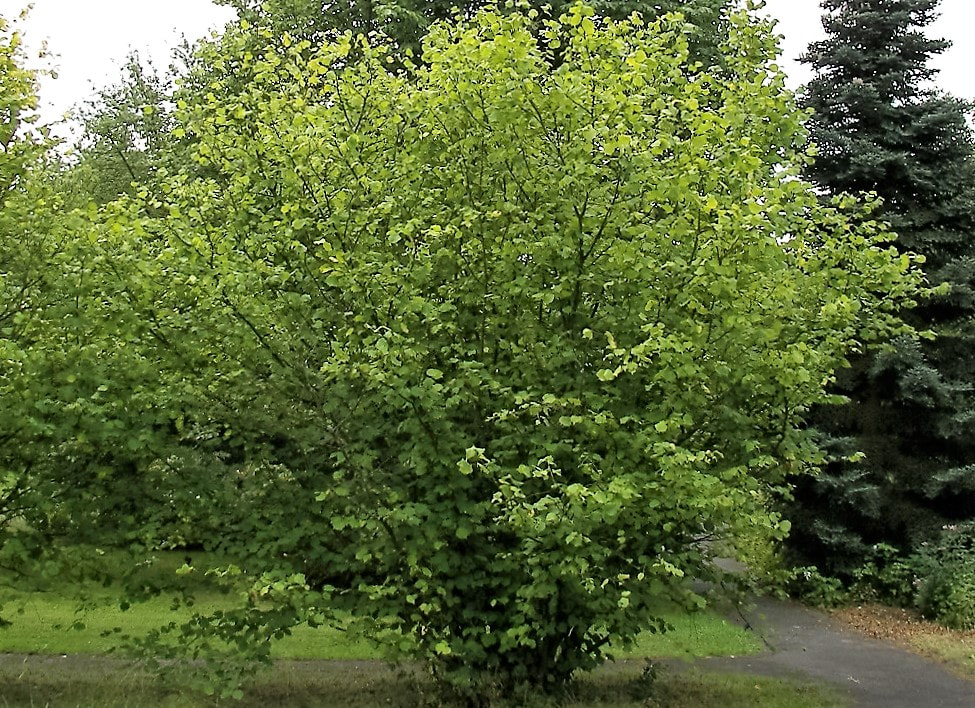



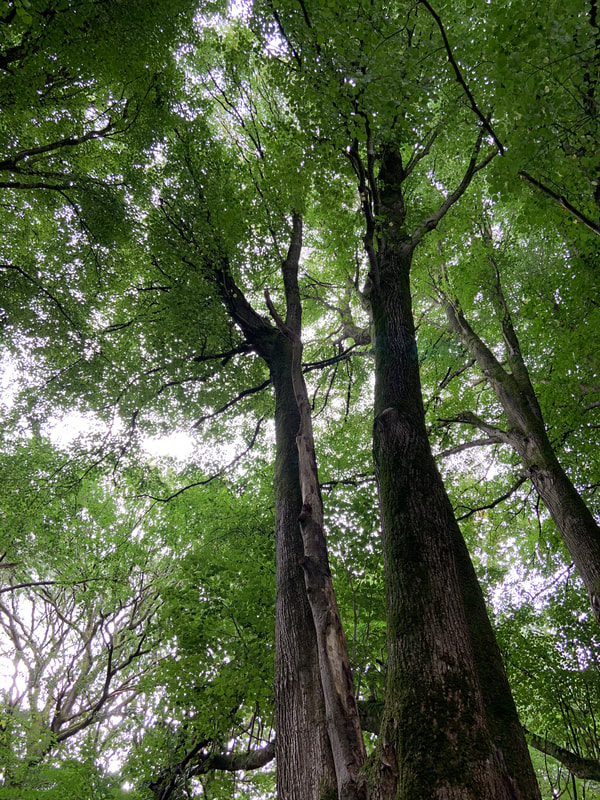
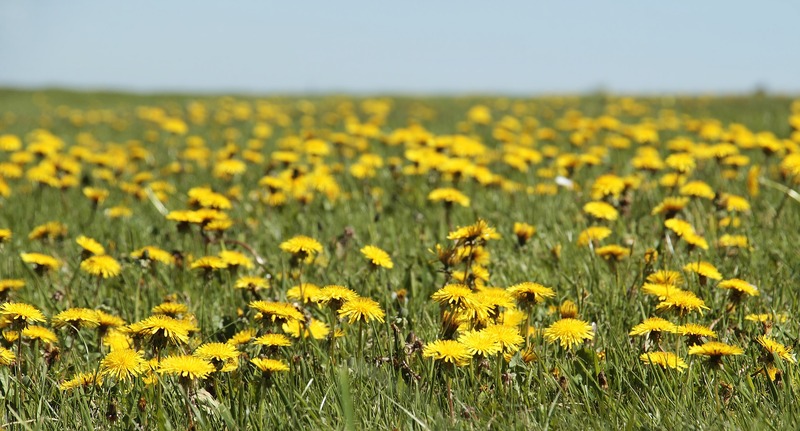
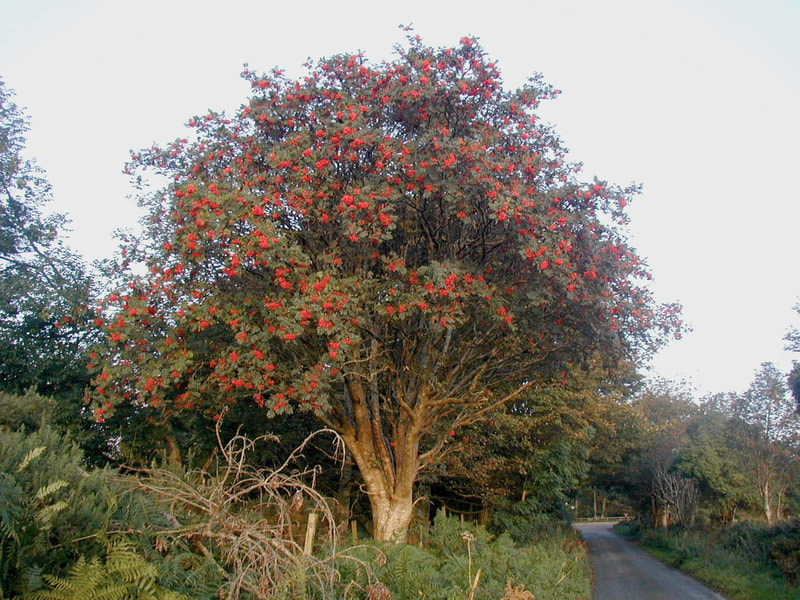


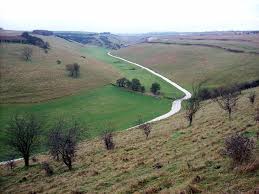
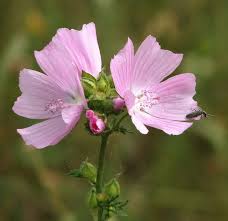

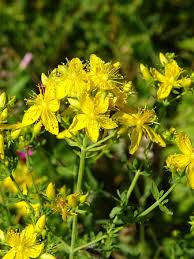

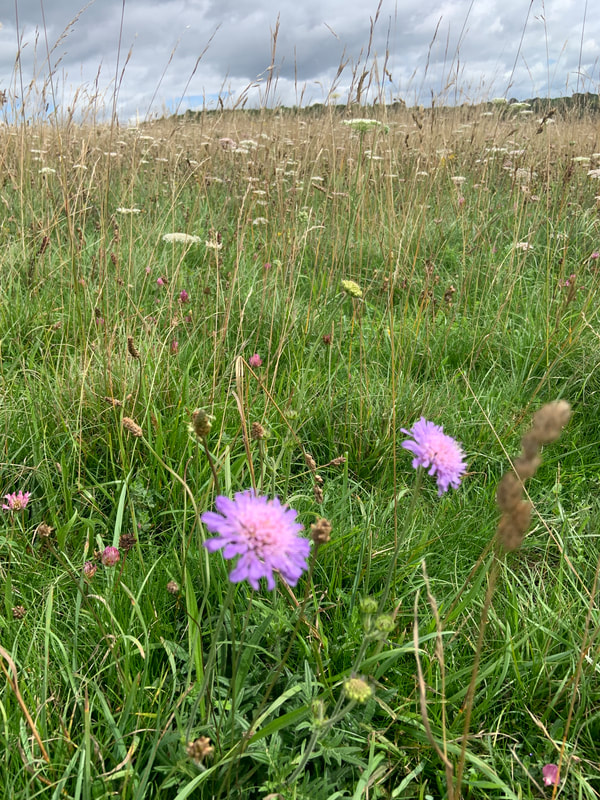
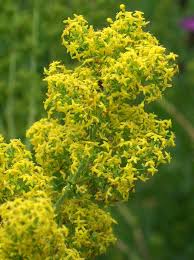
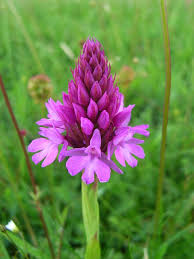
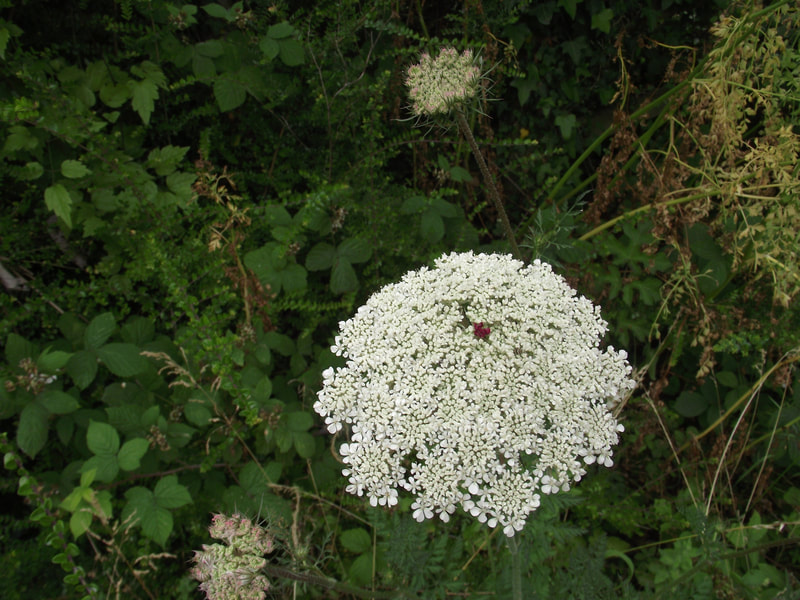
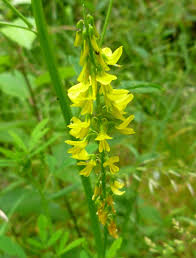

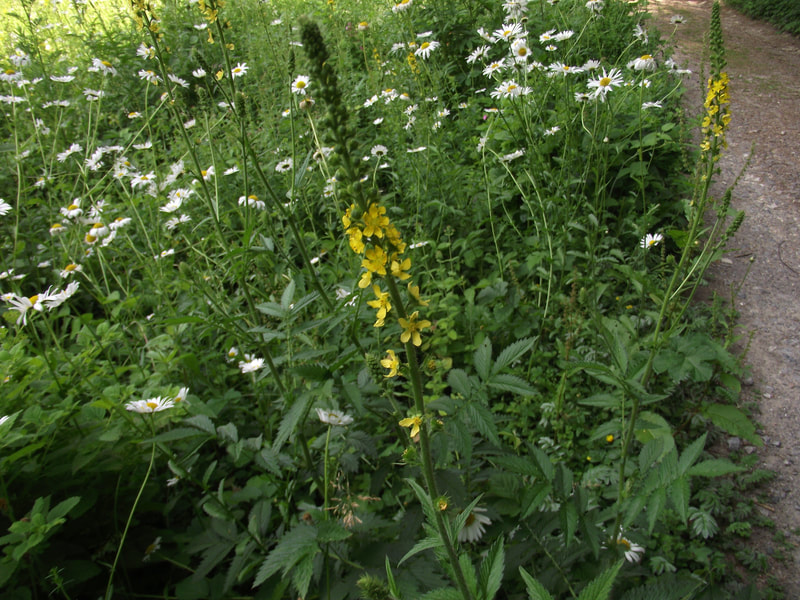

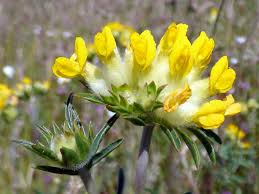
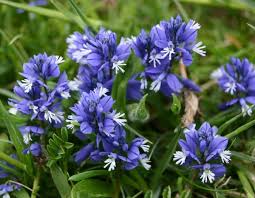
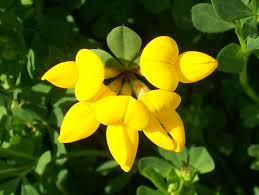
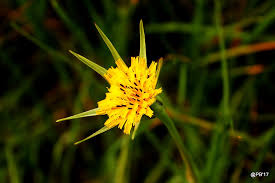
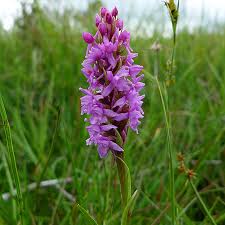
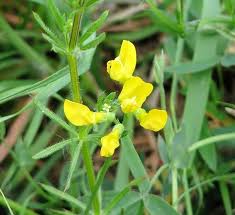
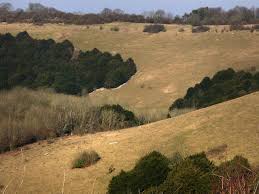

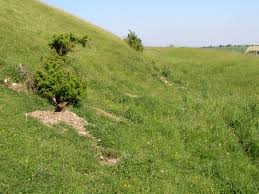
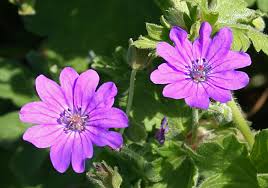
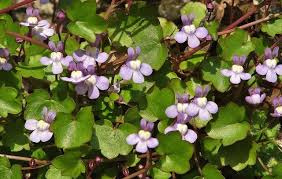
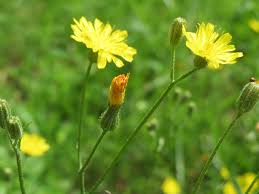
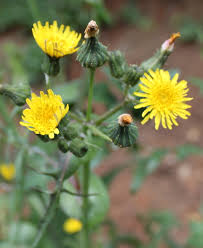
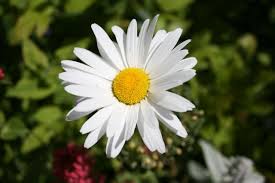
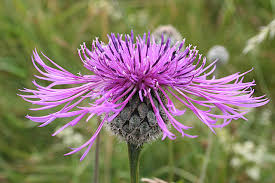
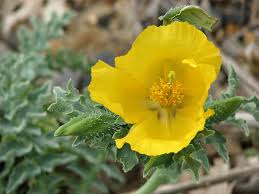
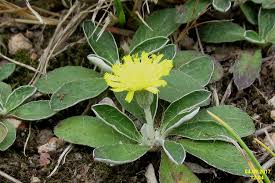
 RSS Feed
RSS Feed
